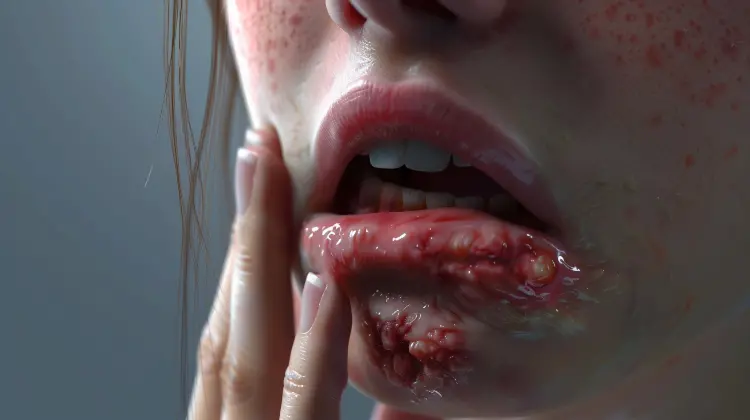Angular stomatitis, often characterized by unsightly lesions at the corners of the mouth, is a condition that can cause significant discomfort and social stigma. Despite its visibility, there are several misconceptions about the condition that exacerbate the challenges faced by those affected. This article aims to clarify these myths, provide a deeper understanding of angular stomatitis, and offer insights into who is most at risk.

Angular stomatitis is a condition marked by inflammation and cracking at the corners of the mouth, which can sometimes resemble wounds. These lesions are not only painful but can also affect a person's appearance and self-esteem, as they are difficult to conceal.
One prevalent myth is that angular stomatitis is contagious, leading to unnecessary social isolation for those affected. The truth is, while the condition can be associated with infections like fungal or bacterial overgrowth, it is not contagious in the way a cold or flu is. According to the American Osteopathic College of Dermatology, angular stomatitis itself is not spread from person to person.
Another common misconception is that angular stomatitis is part of the same family of diseases as cold sores and herpes. This is not accurate. While cold sores are caused by the herpes simplex virus, angular stomatitis can have various causes, including nutritional deficiencies, ill-fitting dentures, or skin conditions. It's important to differentiate between these conditions to avoid further stigmatization and to ensure proper treatment.
Certain individuals are more susceptible to developing angular stomatitis:
A diet lacking in certain vitamins and minerals can predispose individuals to angular stomatitis. Key nutrients include:
Ensuring adequate intake of these vitamins and minerals can help strengthen the body's defenses against the bacteria and fungi that can trigger angular stomatitis.
Angular stomatitis is a non-contagious condition that can cause significant discomfort and social challenges. By understanding the facts and debunking the myths, individuals can seek appropriate treatment and support. Maintaining a balanced diet and addressing underlying health issues are crucial steps in preventing and managing angular stomatitis.
For more detailed information on angular stomatitis and its treatment, you can visit the American Osteopathic College of Dermatology or consult with a healthcare provider.

Vapor Steam Cleaner for Maintaining Hard Surfaces
Discover the power of vapor steam cleaners in maintaining a variety of hard surfaces. These innovative machines offer an eco-friendly, chemical-free solution for cleaning tile, grout, plastics, porcelain, and sealed wood floors. Ideal for both residential and commercial settings, vapor steam cleaners not only clean but also sanitize surfaces, enhancing the overall environment.
Differences Between a Regular Mop and a Steam Mop
As conventional mops are in use from the 15th century and their design has remained basically the same, it is perfectly logical to assume that they adequately do the job. Still, the cleaning industry is no stranger to new developments and they do have a product superior to regular mops.
How to Find the Best Upright Vacuum Cleaner
It is always important to have a clean home, particularly if you have children. It is one of the main reasons why many people want to have the best upright vacuum cleaner that is readily available on the market.